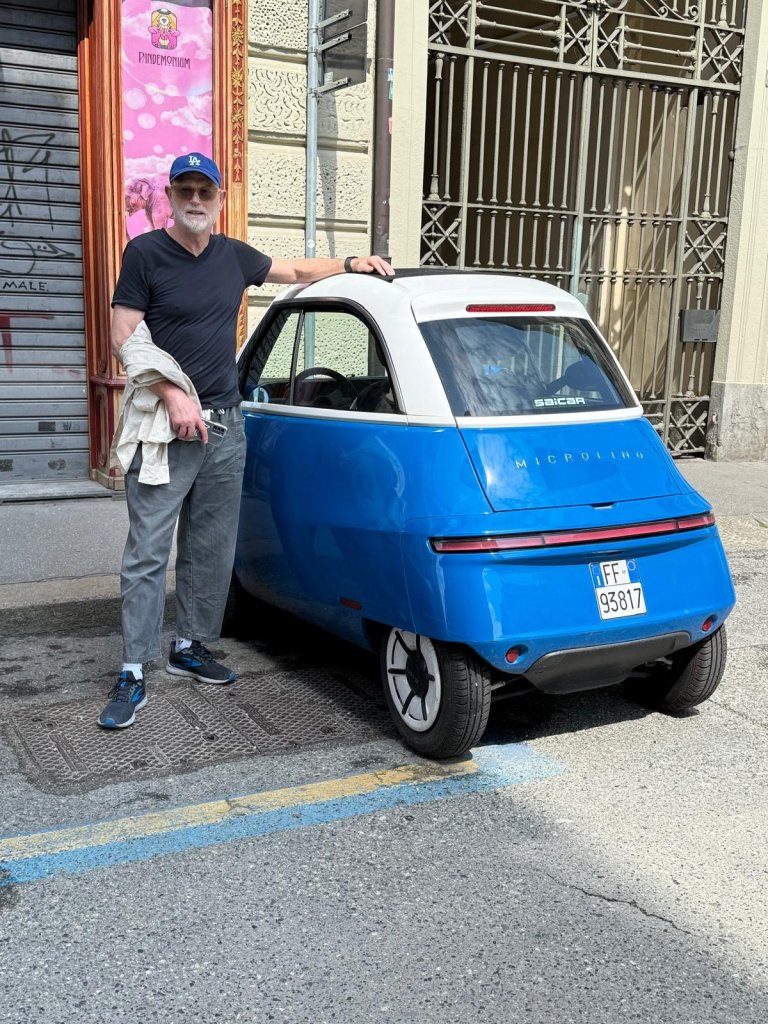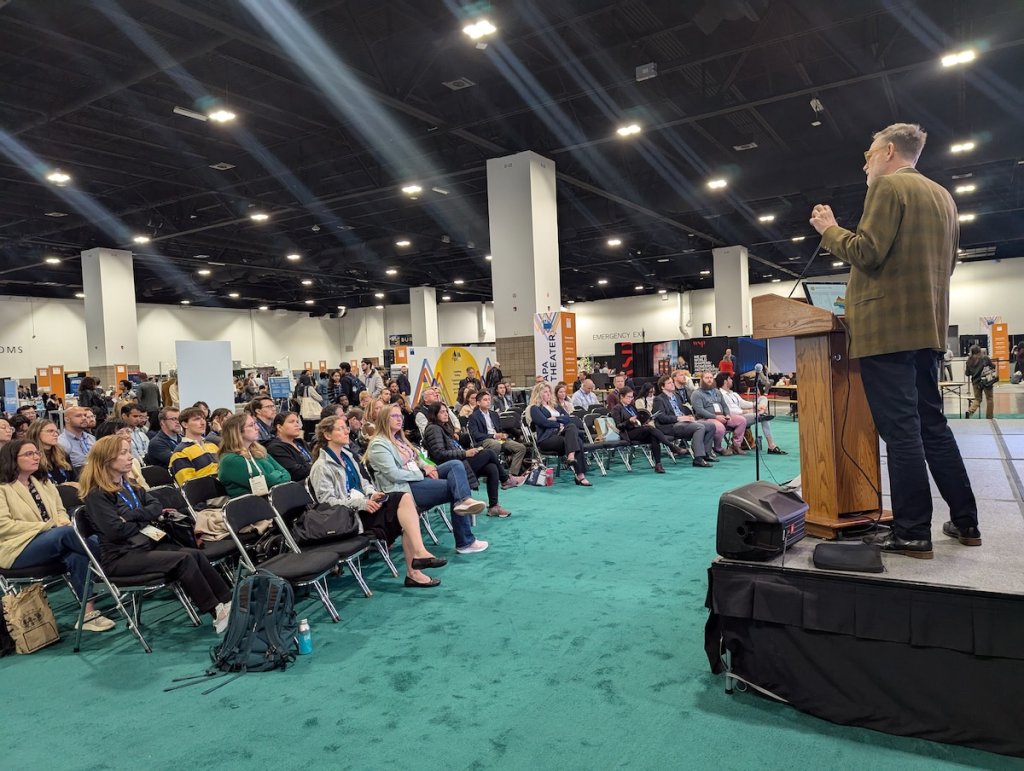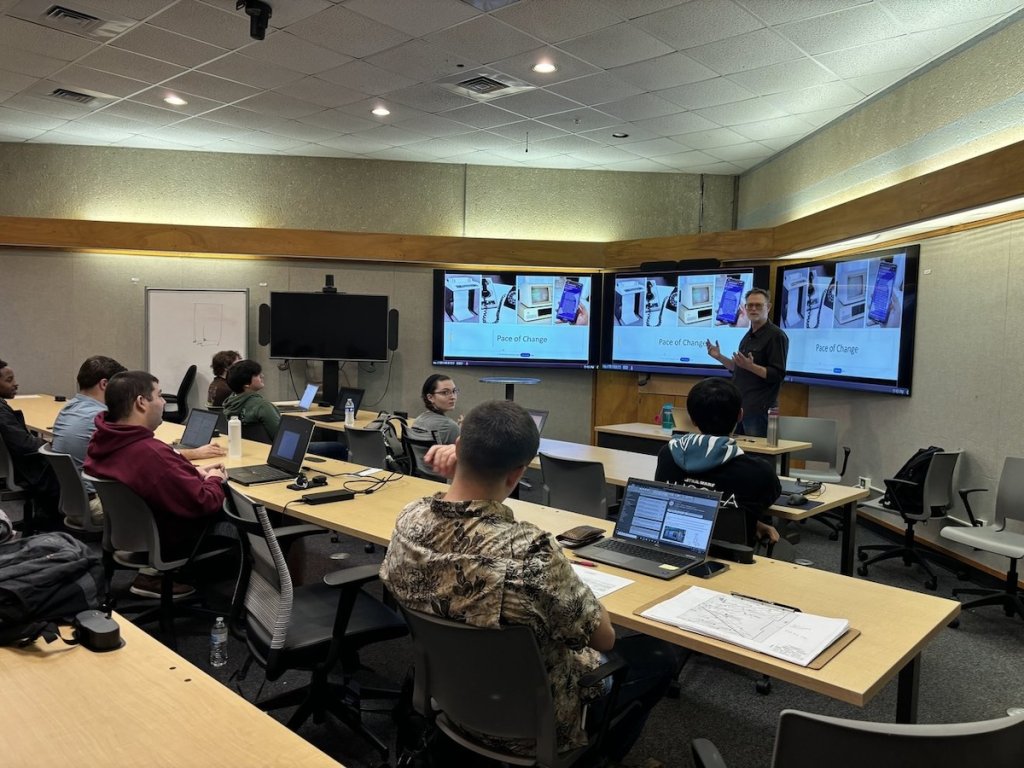In a new monthly column for Planetizen, planner and artificial intelligence expert Tom Sanchez invites a conversation about how AI will shape urban planning — and how urban planners can (and should) shape AI.

Today, Planetizen launched a brand new monthly column exploring the intersection of urban planning and artificial intelligence — the good, the bad, the inevitable and the yet-to-be-shaped. Each month, columnist Tom Sanchez will invite planners to ask questions and explore the world of AI with him to, as he puts it, “learn together how to put AI to work in ways that truly serve our communities.”
Tom is no stranger to technology and planning. A professor in the Department of Landscape Architecture and Urban Planning at Texas A&M University, his research and teaching focus on planning methods, technology, and transportation. He authored the American Planning Association’s PAS Report 604, Planning With Artificial Intelligence, and his forthcoming book, AI for Urban Planning, will be published by Routledge in October 2025. He also chairs the APA Education Committee and is a member of APA’s Artificial Intelligence Foresight Community. He also teaches courses on planning and AI for Planetizen.
So he knows a thing or two! In advance of his column launching, we caught up with Tom to learn more about him and why he thinks it’s essential that planners are not just passive players in the AI revolution.
Planetizen: We hear a lot that planners are feeling fear about AI in the profession. Why do you think they shouldn’t be afraid?
Tom: I think as humans we have this natural sort of uncertainty toward something new, particularly with the magnitude of something like AI. I think the most natural reaction is: I kind of like the way I'm doing things now. Or: you’re telling me I have to learn something brand new? Or you're telling me that this tool or this process could do what I'm responsible for right now? So a lot of that kind of uncertainty, and I think some of that translates into fear.
But I think this process is not going to be sudden. I think a lot of the fear and uncertainties come from a place of, you know: something totally unexpected is going to happen tomorrow. And I don't personally see that. I think that we have plenty of safeguards in place and management and thinking through these processes, which planners like to do. So we will plan! We will plan how we implement this, and we'll be careful. Planners, I think, are naturally careful. They're careful people. That seems to be a basic kind of attribute of people that go into planning. So I just don't think it's going to go as fast and be as overwhelming as some might expect. I say that now, but… we’ll see.

Planetizen: One of the things that you bring up in your first column is this idea that planning has used AI for a long time already. My sense is that there are a lot of things currently in use that are AI, but that we just haven't actually labeled as such. What are some of the ways that planning already uses AI, and how is that changing now?
Tom: I think some of the ways that we've been using AI, and this also goes for other disciplines and professions as well, is the most basic level — things like spellcheck and grammar checking. We don't necessarily think about something like spellcheck as an artificial type of intelligence, but that’s what it is. So I would say at the simplest level, that's where we've seen it. And then, when we're working with things like spreadsheets and also GIS.
Some of the tools and analysis that are available when we're looking at things like optimizing transit routes, predicting population levels, predicting housing, price changes and all that. A lot of what we consider to be statistical models, those are the same things that are used in these AI tools. But in some cases, we're calling it something different. Now we're calling it machine learning instead of, you know, some kind of a population prediction, model or estimation. But it's the same process. We're feeding in, or we're training it with data that then it’s giving us some kind of a recommendation, some kind of an output, or some kind of a solution. So we've been doing that for, you know, decades now. I think that we just take it for granted.

Planetizen: When do you think is the earliest date that most planners started using AI without even really knowing it?
Tom: Well, that would really depend a lot on our definition of what artificial intelligence is in the case of planners. When we think about it, traffic lights are actually a form of artificial intelligence. You know, there used to be somebody standing out there that was directing traffic. When the queue or the backup of traffic got too long on one side they would make a decision: okay, now it's your turn to go. Now we've got these street lights, in a lot of cases with sensors. They're telling us what that backup looks like. And then it's changing and giving the direction about who can go and whose turn it is. So is that artificial intelligence? A lot of times we don't think about that. No, that's just a streetlight. Well, no, it's really kind of doing something that a human used to do for us.
I think in the statistical part of it, which is really the base of a lot of what we consider modeling in urban planning whether that's estimation or simulation work, we mainly started in the 1950s and 1960s with very little data. And the computing power was next to nothing in a lot of cases. The statistical analysis was done manually, too, which is kind of amazing to think about. But those models themselves doing population prediction — trying to estimate how much an urban area is going to grow over time — even though those weren't using the tools that we have now, they were really a form of artificial intelligence for lack of a better word. It’s a way that a system is doing the analysis for us, without us having to do all of that computation.
So I think it's really been around for a long time in that respect. But the tools and the packaging have certainly changed a lot.

Planetizen: It’s almost like you’re saying that we’re putting some new language to something that's been happening already, but with more honesty? Like in a way, it's presenting this opportunity to have a new moment of checking in and asking ourselves: what do we want technology to be doing for us in planning, and what do we want it to not be doing for us in planning?
Tom: I think that's an excellent summary of what these technologies have made us do in terms of rethinking or thinking through the processes that we're using, particularly for analysis. I mainly think of a lot of these tools that I mentioned before — the modeling, the simulation, the estimation, the prediction — these tools are making us go back and think about that process. Because one of the things that we hear a lot now for the application of AI is the importance of transparency. Well, why weren't we talking about that before? You know, we've been doing sophisticated sorts of analyses before. Why wasn't somebody pushing us to say, well, hey, what's the source of that data? Or how did you collect that? What year is it from? And what was the analytical tool that you used to do that? What were the assumptions behind that?
Those were all questions that could have been asked before. But now that transparency in particular seems to be being pushed really hard right now, we're being asked to be more clear and upfront about that. Making sure that we're not crossing any kind of boundaries about privacy and confidentiality. We really want to be sure that we know where this came from and how you got to this so that we can trust it.
Planetizen: That seems like quite a positive outcome of this new moment that we're in.
Tom: I think that's a very positive aspect of this. Where now we're actually going back and asking some of the questions we should have been asking before.

Maui's Vacation Rental Debate Turns Ugly
Verbal attacks, misinformation campaigns and fistfights plague a high-stakes debate to convert thousands of vacation rentals into long-term housing.

Planetizen Federal Action Tracker
A weekly monitor of how Trump’s orders and actions are impacting planners and planning in America.

Chicago’s Ghost Rails
Just beneath the surface of the modern city lie the remnants of its expansive early 20th-century streetcar system.

Bend, Oregon Zoning Reforms Prioritize Small-Scale Housing
The city altered its zoning code to allow multi-family housing and eliminated parking mandates citywide.

Amtrak Cutting Jobs, Funding to High-Speed Rail
The agency plans to cut 10 percent of its workforce and has confirmed it will not fund new high-speed rail projects.

LA Denies Basic Services to Unhoused Residents
The city has repeatedly failed to respond to requests for trash pickup at encampment sites, and eliminated a program that provided mobile showers and toilets.
Urban Design for Planners 1: Software Tools
This six-course series explores essential urban design concepts using open source software and equips planners with the tools they need to participate fully in the urban design process.
Planning for Universal Design
Learn the tools for implementing Universal Design in planning regulations.
planning NEXT
Appalachian Highlands Housing Partners
Mpact (founded as Rail~Volution)
City of Camden Redevelopment Agency
City of Astoria
City of Portland
City of Laramie




























